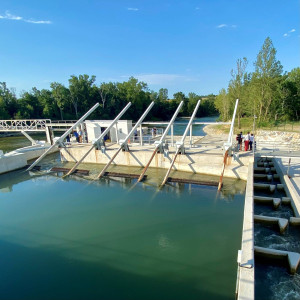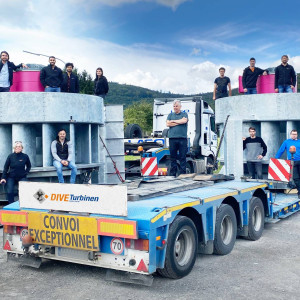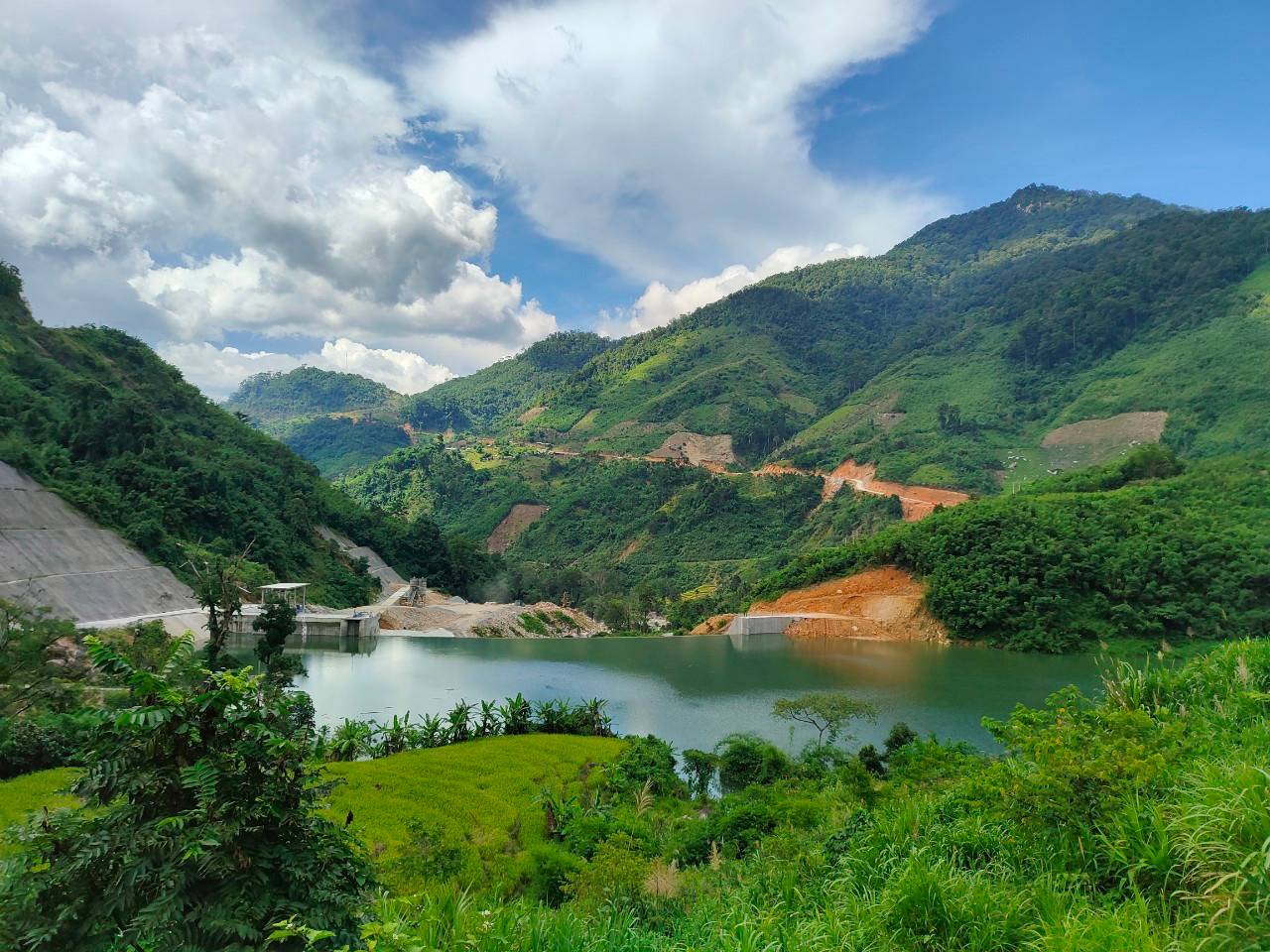Ecological upgrade and enhanced performance at Grépiac power plant5 min read
Lesedauer: 4 MinutenThe existing hydropower plants along the Ariége River in southern France are currently undergoing a thorough overhaul, both in terms of ecological impact and performance. The ageing power plants are being successively upgraded with modern fish passes, fish ladder systems, more efficient turbines and the latest electronics. While work was being carried out on the Grépiac power plant, it was adapted in line with the latest research recommendations on river continuity, and equipped with two new high-powered DIVE turbines, each rated at 560kW.
The Grépiac power plant is located on the Ariége River, about 45 minutes south of Toulouse by car. The Kaplan turbine plant had been connected to the grid since 1960, and retrofitted with an additional Francis turbine in 1980 in the course modernisation work. In 2016, once it had begun to fail to reach nominal output, the operators decided on complete refurbishment of the power plant. The existing turbine chambers were dismantled or closed off, and two new turbine chambers were installed on the riverbank. Enhancements to the power plant’s ecological impact included the construction of a fish pass, the installation of a fine screen in front of the turbine chambers, and the reactivation of an existing kayak lock on the opposite bank.
POWER PLANT ARCHITECTURE
In the course of modernisation, the existing turbine chambers were dismantled and replaced with new chambers with a separate mobile powerhouse. The DIVE turbines are flood-resistant and directly connected to a generator, so no machine room was required at the turbine installation site.
The power electronics and plant control system were installed in a flood-proof transport container. There are four weir panels at the inlet of the power plant, directly behind which is a very shallow vertical rake with four descent openings to the bypass leading into the tailwater. The turbine chambers are located on the weir axis and are equipped with two 560-kW DIVE turbines. The underground section of the Kaplan turbine chamber was retained in addition to two DIVE turbine chambers where, if there is sufficient water, another turbine can be installed.
VERTICAL-SLOT FISH LADDER
The new fish ladder at the Grépiac power plant is a 17-chamber slotted pass. To increase the likelihood of being used by eels, cylinders were inserted in the chambers to ease their ascent and provide hiding places. Extra water is directed through to guarantee a flow rate of 1m³/s.
FINE SCREEN WITH DISCHARGE OPENINGS
A shallow fine screen is inclined at 26° with 20mm bar spaces, and has a total width of 22m. The weir provides four descent openings, each at a width of two metres. Fish willing to descend without jumping the weir or following the fish ladder can reach the tailwater directly via a bypass through. The bypass is pressurised with a water flow of 2.80 m³/s and there are three cleaning rakes arranged
side-by-side.
TURBINES FOR FLUCTUATING HEADS
The Grépiac project faced a particular turbine technology challenge as the head is subject to stark drop fluctuations, from 2.70m to 4.00m, hence the decision to install two DIVE turbines. The chosen DIVE turbines were of a type that has become well established in the French low-head sector in recent years. In contrast to Kaplan turbines, DIVE turbines have fixed runner blades and use converters to control rotation speed, enabling efficiency to be optimised when encountering fluctuating flow rates and strongly varying heads. Although converter losses are extremely low, the Grépiac power plant uses a singly-regulated fixed-speed machine and a double-regulated variable-speed machine in combination, facilitating optimum power plant output at every place of operation.
DIVE turbines offer another benefit with regard to the increasingly extreme weather conditions. The generator is connected directly to the turbine shaft, which has been made permanently and physically absolutely flood resistant via a patented sealing system. The water that constantly passes through the generators at the Grépiac power plant enables them to be cooled by the works water.
FISH-FRIENDLY TURBINES
Although the power plant architecture makes the passage of fish through the turbine chamber very unlikely, the DIVE turbines installed here meet all the specifications for fish-friendly turbines: Fixed blades ensure there are no gaps between the hub and blades for fish to get caught in when swimming through. The blades do not require adjustment, so the gap to the impeller casing is smaller than 2mm, meaning no tolerance has to be factored in for issues such as the freedom of movement for bearings. The nominal maximum speed of 150rpm is significantly lower than that of similarly-dimensioned Kaplan turbines, and drops even further at partial loads, in turn almost completely eliminating the risk of collision for fish swimming through. The recommendation for Kaplan turbines to only operate them with completely open blades when working at full capacity is an issue for the safety of the fish population. However, DIVE turbines can offer the advantage of fully-open blades over the entire operating-load range, reducing collision risk at partial loads and lower speeds.
TRANSPORT, ASSEMBLY AND OPERATION
The DIVE turbines were manufactured at the DIVE Turbinen GmbH & Co KG production plant in Amorbach, Germany, where they were fully assembled and shipped to the south of France by HGV in harmony with planned installation schedule. This machine group can be installed on site en bloc and with very low requirements for a site’s structural tolerances, since the generator is directly connected to the turbine shaft and the entire unit encapsulated.
The benefit of this is that final assembly and extensive testing of complete machines can be conducted at the factory. The turbines were installed and wired up at the Grépiac site in a matter of hours, before being commissioned successfully in December 2021. Subsequent to commissioning, the Ariége region experienced one of the largest flood events in 60 years caused by significant rainfall in the Pyrenees. Within 48 hours, the flow rate had increased to 1,155m³/s. The two DIVE turbines at the Grépiac power managed this impressively and showed their capacity to deal with flood water volumes. Indeed, Grépiac was the first hydropower plant along this section of the river to go back into operation after the flood. The Grépiac power plant is now fit for future climatic extremes such as immense water discharge fluctuations.
Share:






